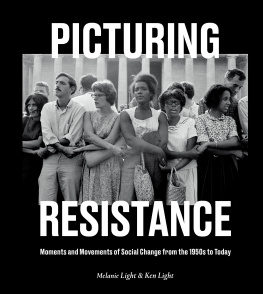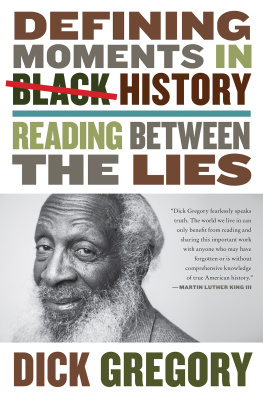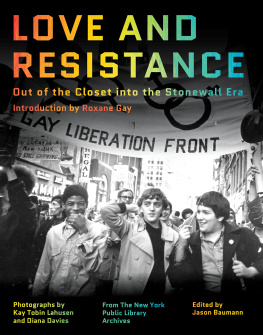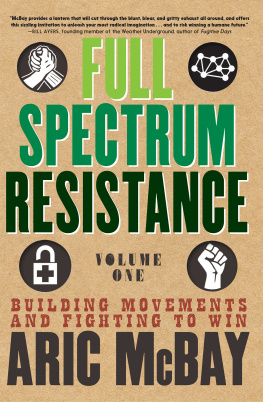Contents
Landmarks
Print Page List
Acknowledgments
We want to thank the many photographers who sent us images to consider for use in this book. We appreciate their patience and understanding as we culled through hundreds to make our selections. Choosing from a rich visual history of protest by dedicated and talented photographers was like trying to drink from a fire hose. We know we missed some events and images and had to exclude others. We were personally enriched by the passion, skill, and dedication of the many conflict and social documentary photographers who witnessed the hard work of social justice resistance over many decades.
Along our book-making journey, it took real detective work to find images for events that we knew happened but were often lost or hard to find. They reside as analog prints in manila folders in libraries, photographers file cabinets, and newspaper morgues. We greatly appreciate the efforts of Jeffrey Smith at Contact Press Images for his advice and help with image selection, and we thank Michael Shulman at Magnum Photos for his help securing rights, too. Marcel Saba at Redux Pictures, Matthew Lutz at Associated Press, and Alamy Stock Photo were responsive and delivered the pictures quickly. Andrew Lichtenstein generously shared his photo contacts, enabling us to discover crucial images.
We especially want to thank the executors of the estates of photographers and public institutions who granted rights to use photographs: Bradley Cook of Indiana University; Oakland Museum of California; the estates of Bob Adelman, Jim Marshall, George Ballis, Peter Simon, Jill Freedman; The Peter Hujar Archive, and the Bob Fitch Photography Archive at Stanford University.
Lincoln Cushing offered his wisdom and expertise in sourcing posters and he photographed the political buttons used in this book. We enjoyed his passion for the history and design of political art. We send a big shout-out to the creative genius of the poster makers who were generous with their permissions: Shepard Fairey, Doug Lawler, Gran Fury collective, Eric Drooker, and the Public Media Center. We also want to acknowledge the anonymous button designers who gifted resisters with those small but powerful graphic statements that live on today.
Thanks to Sue Hamilton for the time and attentive reading of the manuscript. Danielle Parenteau Decker was a lifesaver for her lightning-quick skills at turning notes and scribbles into a bona fide bibliography. Jared Stapp jumped in to help clean digital files at a moments notice.
We are grateful to our designer, Isabelle Gioffredi, assistant editor, Kimmy Tejasindhu, and production director, Serena Sigona, for their enthusiasm and conscientious input. Many thanks to Kaitlin Ketchum and Lorena Jones for bringing this project to us and believing that the story of American resisters needs to be told in these times of great upheaval and transition in our country.
About the Authors
Melanie Light writes about social issues and has written in collaboration with photographer Ken Light on two previous documentary books: Coal Hollow and Valley of Shadows and Dreams, for which she was awarded the California Book Award in 2013. She has published several special edition photography books and was the founding executive director of Fotovision, a nonprofit dedicated to supporting the international community of documentary photographers. Light is the recipient of grants from the Soros Documentary Fund and the Rosenberg Foundation. She teaches and lectures internationally. Currently, she manages a private art and book collection and is a certified fine art appraiser.
Ken Light works as a documentary photographer, focusing on social issues facing America for over fifty years. His work has been published in ten books, including Midnight La Frontera, Whats Going On? 19691974, Coal Hollow, Delta Time, To the Promised Land, With These Hands, Texas Death Row, and Valley of Shadows and Dreams. He is also the author of the text Witness in Our Time: Lives of Working Documentary Photographers, now in its second edition. His new book, Course of the Empire, is forthcoming. He is the recipient of two National Endowment for the Arts Photographers Fellowships and the Dorothea Lange Fellowship. His work has been in numerous magazines, newspapers and a variety of media (electronic and film), and presented in more than 230 exhibitions worldwide, including one-person shows at the International Center for Photography (NYC), Oakland Museum of California, S.E. Museum of Photography, Visual Studies Workshop, Visa pour Limage Perpignan (France), and the San Jose Museum of Art. He is the Reva and David Logan Professor of Photojournalism at the Graduate School of Journalism at UC Berkeley. He was the first photographer to become a Laventhol Visiting Professor at Columbia University Graduate School of Journalism.
BIBLIOGRAPHY
INTRODUCTION
Lyon, Danny. Memories of the Southern Civil Rights Movement. Chapel Hill: University of North Carolina Press, 1992.
CHAPTER ONE
Bloom, Joshua, and Waldo E. Martin Jr. Black against Empire: The History and Politics of the Black Panther Party. Oakland: University of California Press, 2013.
Chadwick, Alex. One of the Little Rock Nine Looks Back. Interview by Alex Chadwick and hosted by Robert Smith. Driveway Moments, NPR, September 4, 2007. Transcript. https://www.npr.org/transcripts/14091050?storyId=14091050.
CMG Worldwide. Biography. Malcolm X. https://www.malcolmx.com/biography/.
Daley, Jason. After 52 Years, the Mississippi Burning Case Closes. Smithsonian, June 23, 2016. https://www.smithsonianmag.com/smart-news/after-52-years-mississippi-burning-case-closed-180959533/.
Eckford, Elizabeth. In Elizabeth Eckfords Words. Facing History and Ourselves. Accessed February 3, 2020. https://www.facinghistory.org/resource-library/audio/elizabeth-eckfords-words.
Fine, Carla. Desegregation at Little Rock. Letter to the editor, New York Times, September 30, 2018. https://www.nytimes.com/2018/09/30/opinion/letters/desegregation-little-rock.html.
Gordon, Taylor. 10 American States with the Most Lynchings of Black People from 18821968. Atlanta Black Star, February 24, 2015. https://atlantablackstar.com/2015/02/24/10-american-states-with-the-most-lynchings-of-black-people-from-1882-1968/.
Haas, Jeffrey. The Assassination of Fred Hampton: How the FBI and the Chicago Police Murdered a Black Panther. Chicago: Chicago Review Press, 2010.
Harris, Adam. New York City High Schools Endless Segregation Problem. Atlantic, March 20, 2019. https://www.theatlantic.com/education/archive/2019/03/stuyvesant-high-schools-chronic-lack-black-students/585349/.
Higgins, Bill. Throwback Thursday: Bob Dylan Sang for Civil Rights in 1963. Hollywood Reporter, August 28, 2014. https://www.hollywoodreporter.com/news/throwback-thursday-bob-dylan-sang-728240.
History.com editors. Montgomery Bus Boycott. History, June 6, 2019. https://www.history.com/topics/black-history/montgomery-bus-boycott.
Hynes, Patricia H. The Recurring Silent Spring. Oxford: Pergamon Press, 1989.
The King Center. The King Philosophy. https://thekingcenter.org/king-philosophy/.
Lomax, Louis E. When the Word Is Given: A Report on Elijah Muhammad, Malcolm X and the Black Muslim World. Westport, CT: Greenwood Press, 1979.
Margolick, David. We Need More Enemies of the People. New York Times, September 21, 2018. https://www.nytimes.com/2018/09/21/opinion/enemies-of-the-people-jerry-dhonau.html.
Meier, Allison. The 1960s Photographer Who Documented the Peace Sign as a Political Symbol. Hyperallergic






